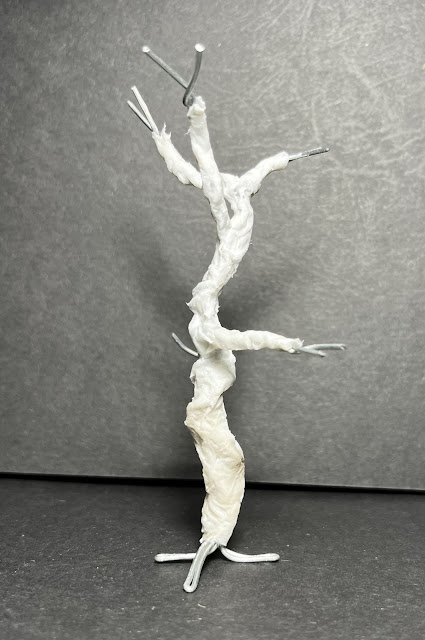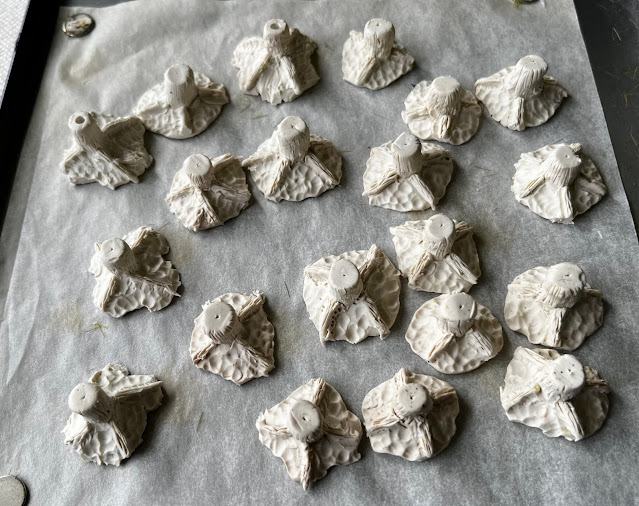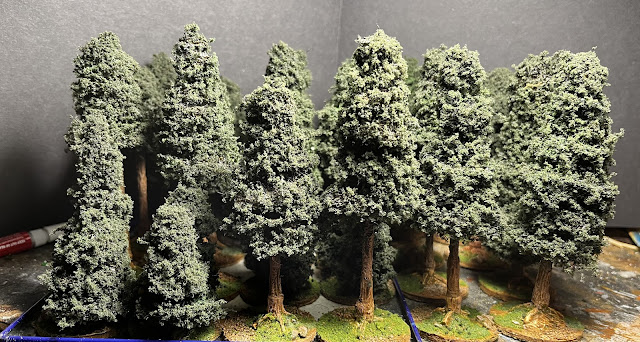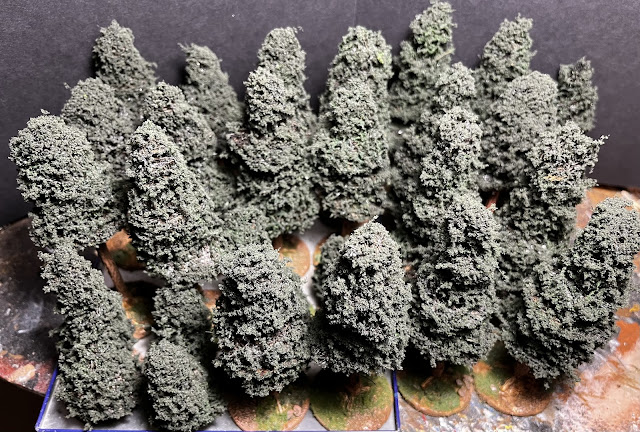Day nine of the Grand Tour, saw us depart Devonport, heading west towards Birnie. On the western outskirts of the latter we turned south and drove to a beautiful spot called Fern Glade, a place recommended for spotting platypus. We spent about 45 minutes there, but spotted none, although the telltale signs of bubbles rising from the still waters indicated that they were about, just unwilling to show themselves.
Heading southwest from there we were making for Macquarie Harbour, about half way down the west coast of the island. We drove off into picturesque rolling countryside, but were soon into mountainous terrain with the Meredith range on our right and Cradle Mountain on the left. It was a magnificent drive through towering forests of gum, Tasmanian Myrtle and Ironwood.
Finally we arrived at the seaside town of Strahan (pronounced Strawn - which irked me since my own name of Strachan is often mispronounced as Strawn by the English tongue instead of the Scottish pronunciation Stra-kan). A work colleague had been in this place a few years back when he sailed around Tasmania and was trapped in Macquarie Harbour for a week when strong westerly winds prevented them from sailing out of the very narrow and treacherous harbour mouth. He said it was a stunning spot and he was not exaggerating. We arrived there with the temperature showing 30 degrees C, clear skies and a brilliant blue sea.
Our hotel was an eclectic mix of a modern structure on the bluff above the bay and the converted worker's cottages on the shore. Our room was the latter and a nice little place it was too, even if the wifi wouldn't connect.
 |
| The cottages - each one was a room |
 |
| Our room was in Federation House, on the right of the lower floor. |
Dinner was at a very nice place overlooking the bay...pork belly for me, beautifully cooked and presented.
Next day, day ten, we took a local tourist train along the coast. This used to be the track that ran up to the copper mining area up the King River. The line was closed in 1963 but brought to back to life as a tourist attraction in the 1990s. It was a nice leisurely trip through the rainforest along the river bank.




By the time we made it back to the station the weather had turned from a lovely sunny day with calm seas to grey skies and choppy seas. As we headed out of town making for the Central Plateau. Our trusty SatNav lead us on four hour drive, back-tracking around the northern side Cradle Mountain. The weather was worsening, with heavy squalls and lowering cloud, slowing us a little. Then for the next 60 kilometres on a winding road with no opportunity to overtake we got stuck behind a tedious driver who insisted on breaking on EVERY corner, whenever they met ANY oncoming traffic, then in completely RANDOM spots, and regularly drifting across the centre line. Finally we got past them, having lost the better part of half an hour of time. We had just begun to make up the time when we encountered low cloud that cut visibility down to 20 metres in places. Finally at around 5:30 we made it to our destination.
When the Australian Antarctic expedition looked for the location to set up a training centre, they settled on a position in the Tasmanian Central Plateau on the edge of Lake Augusta at an altitude of 3800 feet, at 42 degrees south on land owned by the Tasmanian hydro company. Mid-winter temperatures here could be sub-zero. They established Bernacchi Lodge on site in 1981, but in 1999 the training facility was moved and the building fell into disrepair. In 2015 an expression of interest was issued for its demolition, but a developer put forward a proposal to redevelop it as a wilderness retreat and it opened as such in 2016 as the Thousand Lakes Lodge, our destination.
The location is remote and ruggedly beautiful, laced with lakes that are linked to the hydro system. We came to the lodge to walk some of the trails and generally relax after ten days on the go. For those familiar with the geography of the North Island, NZ, the terrain around the lodge is very similar to the Rangipo Desert on the volcanic plateau. The refurbished lodge has eight rooms (although on the night of our arrival we were the only guests - more arrived the next day) and two big common rooms, one of which overlooks a lawn where native animals graze.
We settled in quickly and a home cooked dinner was served at 6:30 - very generous dinners too as evidenced by my lamb shank and vegetables...
After dinner we sat in the observation lounge where we saw a few Bennett's Wallabies grazing as the sun was setting.
Then out of the distance came one, then two, then three Spotted Tail Quolls, little stoat-like animals that scuttle around at a rapid rate looking for bugs and worms.
Then to the left a devil arrived...
He chased the quolls around for a few minutes then wandered off into the darkness. The quolls fossicked around for a while then disappeared. But shortly after another quoll turned up - a different one, an Eastern Quoll, with a darker fur an a bushy tail.
By 9:00 the effect of our long drive had taken its toll and we turned in for the night.
Just before dawn on day eleven we were awakened by strong wind and the sound of heavy rain. When we raised the blind we saw that the wind had indeed strengthened and swung around to the southwest, but rather than rain we were being lashed by snow! It was just cold enough for the snow to settle briefly and the sleet kept coming in waves. We did go out for a walk about 9:30, but the wind chill made it decidedly unpleasant. Even the wallaby in the shot below couldn't understand what these stupid humans would want to leave the warmth of the lodge...
From the top of the dam I could just make out the lake where whisps of low cloud looked like steam rising from the water.

...and the sleet kept coming...

Obviously things were not going to clear up in a hurry so we dug out the books and settled down in front of the fire. While occasionally watching a mob of wallabies and a family of Tasmanian hens graze on the lawn I read nine chapters of T. Harry Williams' "Lincoln and his Generals" and managed to fit in some lunch. It was fascinating just watching the weather blow through and the way the colours of the landscape changed with the varying light.
As the afternoon passed the sleet began to ease, but the wind was still viciously cold. We watched an increasing number of wallabies gather on the lawn. After dinner we watched for wildlife again and observed more quolls and two devils. It was great to see them in the wild. We retired to our room to read some more before sleep. We had no regrets for our day of leisure.
Thursday dawned still, clear and bearably cold. I walked a short distance from the lodge to take in some of the barren beauty of this area, but breakfast and our departure were calling.
As we drove away from the lodge we paused in a few spots to take in more of the dramatic landscape.
We couldn't linger too long though as the road to Hobart lay ahead of us. Just after 12:30 we arrived in the city, dropped off the bags and parked the car before lunch at a Vietnamese restaurant.
Day thirteen, Thursday, saw us drive south of Hobart to the Hastings Caves. The road took us through the picturesque Huon Valley and the settlements of Huonville, Waterloo, Dover and Hastings. The caves were set back in the forest some 500 metres from the road's end and were impressive with the public access area running back maybe a kilometre and then down perhaps 50-70 metres - and 500 stairs they reckoned. I have been in a number of cave systems in locations around the globe, but some of the formations seen here were the finest I have seen.
After a quiet return trip we left the car at the hotel and walked back into town for a couple of bits of shopping, then stopped in at the night markets on the way back to the hotel.
Saturday, day fourteen, was spent around Hobart town. The Salamanca Markets were open this day and they were just down the road from us. This was a very large market of several hundred stalls and it was packed, especially since there was a large cruise ship in port. After her indoors picked up a few items we had coffee in a great little cake shop in Murray Street before heading back to the apartment for lunch. A walk along the waterfront on a beautifully sunny afternoon closed out the day.
Sunday, day fifteen, was a relatively uneventful return to Auckland. Now it's back to reality with a thump...it's 6:30 Monday morning and I am back in the office with a mere 626 unread emails in the inbox (I was expecting 800+)...Tasmania seems a lot further than 2,400 km away!






















































